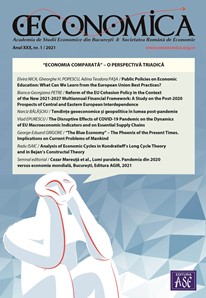
Cooperation Rationale for China and the CEE Countries
When the BRI (Belt and Road Initiative) was first introduced to the world, it was both hailed and doubted. One common misunderstanding regarding the BRI is whether it can transcend individual infrastructure construction and realize true regional economic integration, which would surely help China manage its overcapacity problem and its structural economic transition. However, we should go further and ask another question – what are the infrastructures for?
China`s relative advantages in various fields will facilitate for developing countries the adoption of self-sustained development tools such as special economic zones, urbanization and economic structural transformation.
The name of BRI refers to two economic integration projects: the Silk Road Economic Belt and the 21st-Century Maritime Silk Road. China and the Central Eastern Europe (CEE) countries are no strangers to the ancient silk road. Historically, the exchange and communication between the East and the West can be dated back to 1st century BC. In fact, despite the silk, there were other precious commodities exchanged in the ancient Silk Road. Precious metals, gems, glass and ivory, which were not manufactured in China until the fifth century, were traded along the Silk Road. In the opposite direction, lacquer, bronze objects, jade, ceramics and furs were traded. The rise and fall of the ancient Silk Road was contingent on many factors – transport, the relative openness of countries, regional conflicts, security of trade, the expansion of deserts and so on. In recent centuries, one major reason causing the decline of the land Silk Road is due to rise of ocean shipping.
Globalization in waves
There are five priorities for cooperation in the BRI – policy coordination, infrastructure connectivity, unimpeded trade, financial integration and people-to-people exchanges.
In the contemporary world, the first wave of globalization benefited coastal countries the most because of geographical convenience and low transport cost. The second wave of globalization, started by the BRI and other regional integration initiatives (i.e. Trans-European Networks Initiative etc.) would better bridge the transportation gaps for landlocked and quasi-landlocked countries and assist those countries to better connect with the emerging economic system. It has only been made feasible in recent time based on solutions developed by China and other countries: new transportation/infrastructure technologies, the economies of scale lowering the cost and the availability financial resources. For those that lagged behind the globalization trend in relative terms, China`s expertise in industrialization and urbanization offers joint learning and concerted transformation opportunities. China`s relative advantages in various fields will facilitate for developing countries the adoption of self-sustained development tools such as special economic zones, urbanization and economic structural transformation.
The importance of infrastructure lies in connectivity not just construction. The BRI connects two vibrant economic circles: the East Asian economic circle and the developed Western European economic circle while encompassing and linking countries such as China, the Central Asian countries and the CEE countries in between with huge potential for business opportunities. There are five priorities for cooperation in the BRI, infrastructure connectivity being only one of them. These five priorities are policy coordination, infrastructure connectivity, unimpeded trade, financial integration and people-to-people exchanges.
A sound basis
In 2016, despite the sluggish global economy and declining China-EU bilateral trade, trade between China and the CEE countries grew by 9.5%, reaching USD 58.6 billion. Bilateral trade between China-CEEC accounted for 9.8% of the total trade volume between China and EU.
The friendship between China and the CEE countries has a long history. The cooperation is an integral part of China-Europe relations, which also reinforces China`s firm support for the European Integration and Eurozone Development. Currently, the 16 countries in Central and Eastern Europe cover an area of 1.36 million square kilometers, with a population of 123 million. The average per capita GDP is USD 12,000. In recent years, trade between China and CEE countries has maintained positive momentum. In 2016, despite the sluggish global economy and declining China-EU bilateral trade, trade between China and the CEE countries grew by 9.5%, reaching USD 58.6 billion. Bilateral trade between China-CEEC accounted for 9.8% of the total trade volume between China and EU.
Cooperation between China and the CEE countries has many unique advantages:
First, there are no unsettled issues between China and the CEE countries. There is no prerequisite for cooperation. It is only based on the principle of mutual respect, equality and mutual benefit. This is the cornerstone of the bilateral cooperation.
Secondly, both sides show the strong desire for cooperation, which is the internal driving force. China and the CEE countries are facing common development tasks that provides a historic opportunity to work together and get connected to the global value chain. Besides, China and the CEE countries could complement each other through cooperation. At present, the CEE countries` demand for infrastructure in highway, railway, ports and power plants is massive. The industrial foundation for machinery manufacturing, food processing, furniture manufacturing etc. is strong. The tourism and agriculture sectors are growing rapidly, which all contribute to a solid foundation for the friendly and pragmatic bilateral cooperation.
Cooperation mechanisms
The China and CEE countries cooperation mechanism has matured over time. In September 2013, the Secretariat for Cooperation between China and CEE Countries was established in Beijing, together with the USD 10 billion Special Credit Line. The current coordination mechanism under the Secretariat includes coordinators from the CEE countries, and representatives from 24 Chinese ministries, agencies and banks. Efforts have been made to establish the China-CEEC Association on Transport and Infrastructure Cooperation and the China-CEEC Secretariat on Logistics Cooperation. Besides, pilot programs have been carried out among China and CEE partners. There are actions to modernize the Port Bar (Montenegro) – Belgrade track section and the extension of high-speed railway network to improve the connection of the Port of Bar to the modern railway network in Central and Eastern Europe. The establishment of multimodal logistics centers in CEE countries, the Framework Agreement on Cooperation in Facilitating Customs Clearance among China, Hungary, Serbia and Macedonia, the China-Hungary-Serbia Joint Working Group on Transport Infrastructure Cooperation are all in active preparation.
The current coordination mechanism under the Secretariat includes coordinators from the CEE countries, and representatives from 24 Chinese ministries, agencies and banks.
Financial resources are available through different channels for China and CEE countries – for instance, the China-CEE Investment Cooperation Fund was set up in November 2013 with a total commitment of USD 435 million, which is sponsored by the Export-Import Bank of China and Hungarian Export-Import Bank. The fund will focus on supporting infrastructure, telecommunications, energy, manufacturing, education, medical and other special areas in CEE regions. The Silk Road Fund Co., Ltd was established in Beijing in 2014, with a total capital of USD 6.5 billion. The Silk Road Fund mainly provides investment and financing support for trade and economic cooperation and connectivity under the BRI. The Sino-CEEF Holding Company is a new platform established in 2016 for economic cooperation between China and CEE countries and is invested in solely by the Industrial and Commercial Bank of China. The company will initiate a Sino-CEE fund, which will focus on investment cooperation in infrastructure, high-tech manufacturing and mass consumption industries.
Conclusion
In conclusion, the common aspiration to become connected to the international economic system and the global value chain, the common task to achieve sustainable development, the traditional relationships and new common interests could bring China and CEE countries together to further enhance their bilateral economic cooperation.








